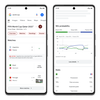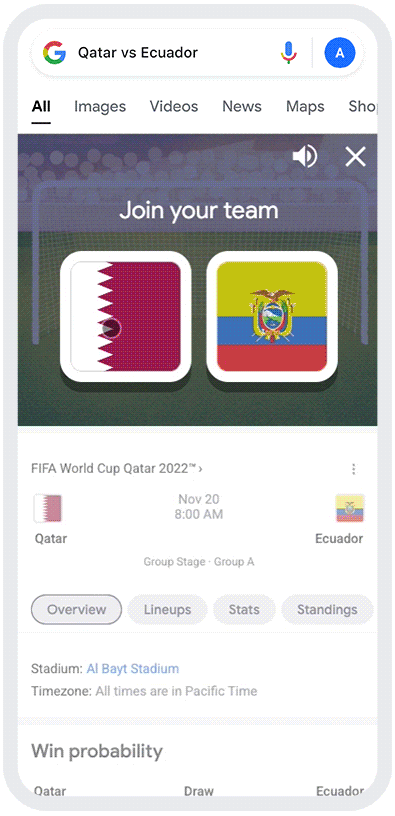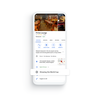Wednesday 30 November 2022
New details on commercial spyware vendor Variston
by Clement LecigneThreat Analysis Group via The Keyword
Google Play’s best apps and games of 2022
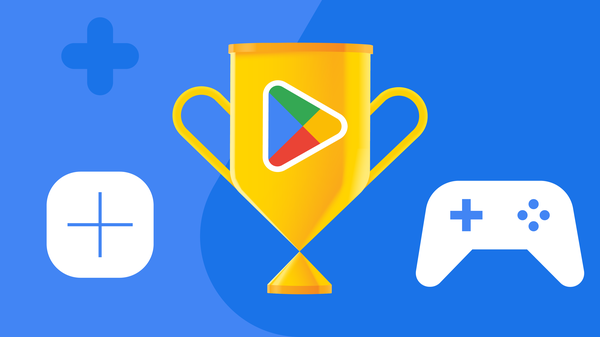 We’re announcing Google Play’s Best of 2022 Awards, celebrating the year’s best apps, games and more.
We’re announcing Google Play’s Best of 2022 Awards, celebrating the year’s best apps, games and more.by Tian LimGoogle Play via The Keyword
Tuesday 29 November 2022
Go for a festive drive with Santa and Mrs. Claus
 Drive with Santa and Mrs. Claus to add some cheer to your rides this holiday season.
Drive with Santa and Mrs. Claus to add some cheer to your rides this holiday season.by Waze via The Keyword
Protecting small businesses from scammers
by Jon Vermandel via The Keyword
Teaming with the NBA Foundation to support HBCUs
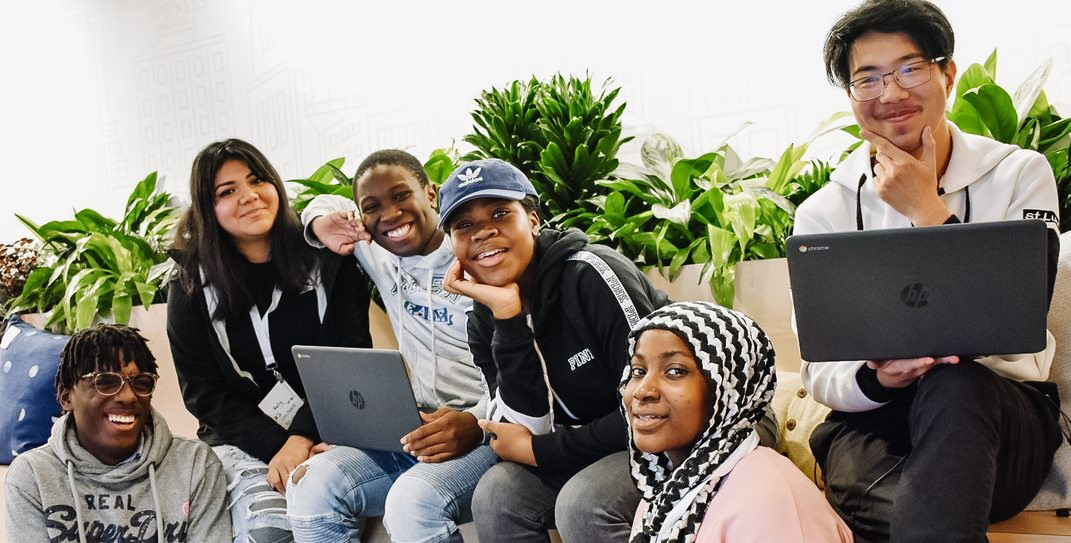 Google is contributing up to $1M to the NBA Foundation to support career and development opportunities for Black youth
Google is contributing up to $1M to the NBA Foundation to support career and development opportunities for Black youthby Daryl ButlerU.S. Devices & Services Marketing via The Keyword
In Brussels, Fighting Misinformation Online
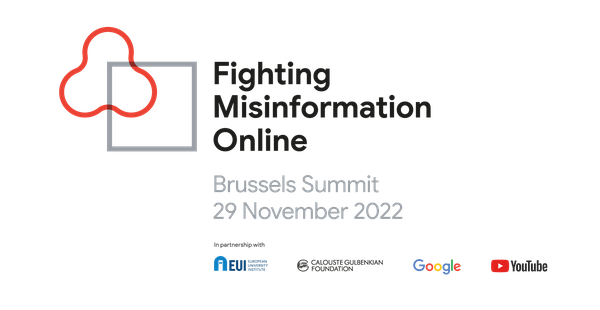 Google, YouTube and partners are joining with European policymakers, organizations and media in Brussels to discuss tackling misinformation.
Google, YouTube and partners are joining with European policymakers, organizations and media in Brussels to discuss tackling misinformation.by Matt CookeGoogle News Lab via The Keyword
Monday 28 November 2022
Helping increase d/Deaf representation in the media industry
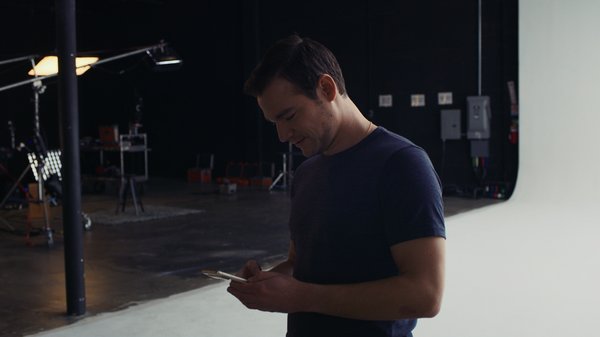 We’re partnering with Deaf West Theatre and Daniel Durant to share some of Google’s most helpful communication tools.
We’re partnering with Deaf West Theatre and Daniel Durant to share some of Google’s most helpful communication tools.by Janelle Brod via The Keyword
Partnering with iCAD to improve breast cancer screening
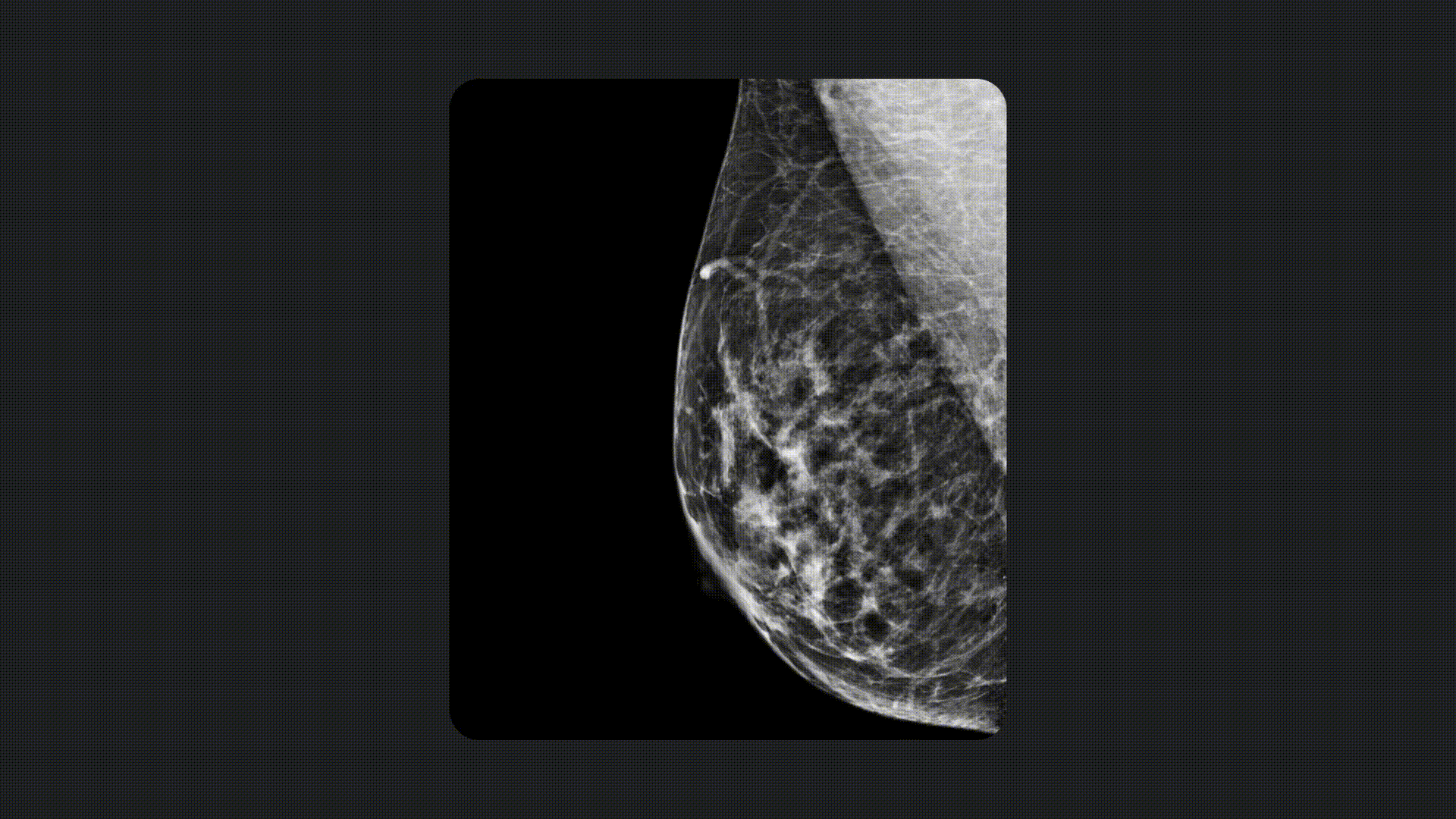 Our partnership with iCAD Inc. marks the first time we are licensing our mammography AI model in clinical practice.
Our partnership with iCAD Inc. marks the first time we are licensing our mammography AI model in clinical practice.by Greg Corrado via The Keyword
Thursday 24 November 2022
Celebrating the baguette with five bite sized facts
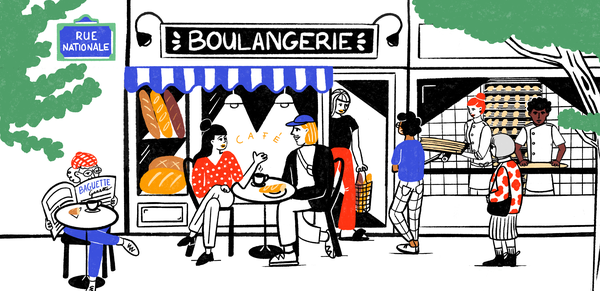 Some love it for its crispy golden crust, others for the fluffiness of its crumbs, but the French all agree that the baguette is their favorite loaf. Indeed it’s so embe…
Some love it for its crispy golden crust, others for the fluffiness of its crumbs, but the French all agree that the baguette is their favorite loaf. Indeed it’s so embe…by Dominique Anract via The Keyword
How Southeast Asia’s small businesses can go global
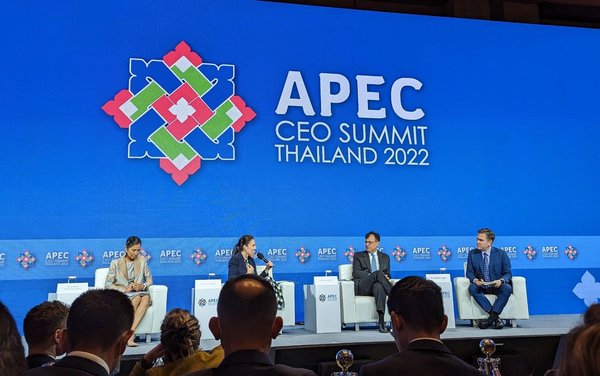 Small and medium businesses (SMBs) are a key factor in the growth of Southeast Asia’s digital economy.
Small and medium businesses (SMBs) are a key factor in the growth of Southeast Asia’s digital economy.by Michaela Browning via The Keyword
Wednesday 23 November 2022
A year of clean energy momentum in Europe
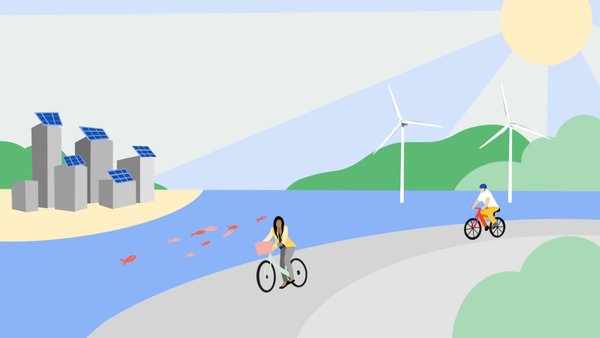 Spain and UK cloud regions and offices are on track to operate at or near 90% carbon-free energy in 2025 thanks to two new clean energy projects.
Spain and UK cloud regions and offices are on track to operate at or near 90% carbon-free energy in 2025 thanks to two new clean energy projects.by Matt BrittinGoogle Europe, Middle East and Africa via The Keyword
Tuesday 22 November 2022
Got a minute? Learn tips from Women Techmakers
by Rana Abdelhamid via The Keyword
How computers can use radar to understand nonverbal cues
by Lauren BedalGoogle ATAP via The Keyword
New ways to explore the growing Indigenous Americas hub
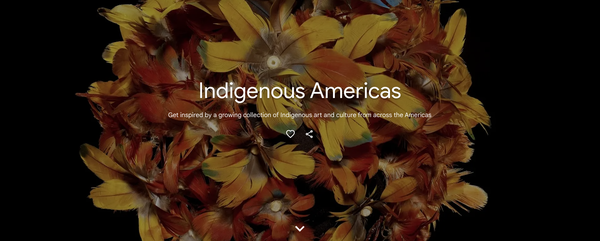 Get inspired by a growing collection of Indigenous art and culture from across the Americas on Google Arts & Culture.
Get inspired by a growing collection of Indigenous art and culture from across the Americas on Google Arts & Culture.by Curtis Quam via The Keyword
Monday 21 November 2022
Helping to solve for sustainability in Asia Pacific
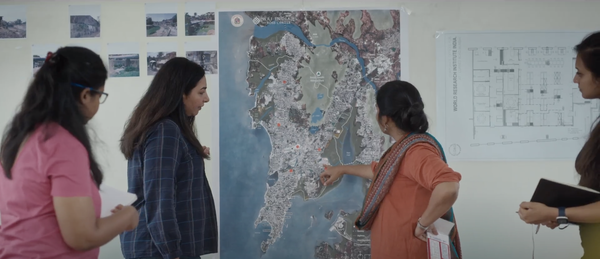 As a tech-forward region that’s home to a large percentage of global youth, there’s good reason to believe that the innovation that’s needed to engage in climate action …
As a tech-forward region that’s home to a large percentage of global youth, there’s good reason to believe that the innovation that’s needed to engage in climate action …by Scott Beaumont via The Keyword
Our commitment to climate-conscious data center cooling
 Learn about our climate-conscious data center cooling strategy and how it complements our existing sustainability commitments.
Learn about our climate-conscious data center cooling strategy and how it complements our existing sustainability commitments.by Urs HölzleTechnical Infrastructure via The Keyword
How we’re working with Latin American CS researchers
by Sloan Davis via The Keyword
Why this former researcher started a game company
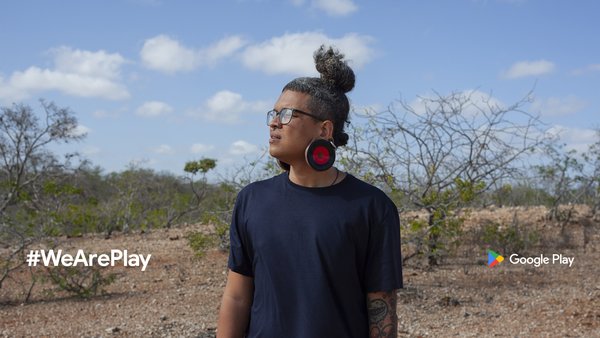 Our latest #WeArePlay film features Filipe, a former researcher who co-founded a game company to share Brazilian culture with the world.
Our latest #WeArePlay film features Filipe, a former researcher who co-founded a game company to share Brazilian culture with the world.by Patricia CorreaGlobal Developer Marketing via The Keyword
5 ways to safely shop online this holiday season
 Check out five ways you can use Google to safely shop online this holiday season.
Check out five ways you can use Google to safely shop online this holiday season.by Jenny Cheng via The Keyword
100 holiday gift ideas based on Google searches
 This year’s trending gift ideas, according to Google.
This year’s trending gift ideas, according to Google.by Aya Kanai via The Keyword
Friday 18 November 2022
Using AI to study 12 years of representation in TV
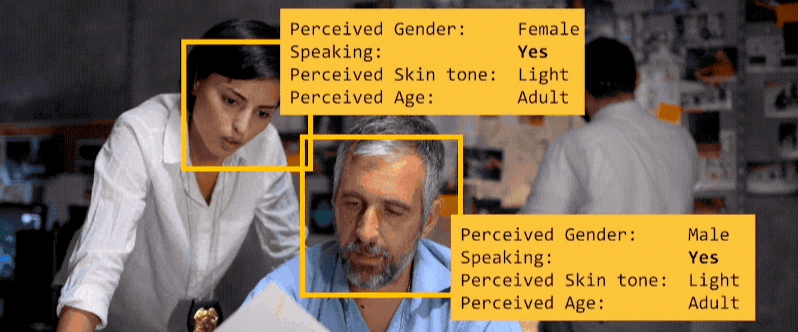 A new report from the Geena Davis Institute, Google Research and USC uses AI to analyze representation in media.
A new report from the Geena Davis Institute, Google Research and USC uses AI to analyze representation in media.by Komal Singh via The Keyword
A ruling in our legal case against the Glupteba botnet
by Royal Hansen via The Keyword
Thursday 17 November 2022
4 ways that switching to Pixel is easier than ever
 Switching to a new Pixel phone has never been easier. Just connect, select and transfer to get started on your new Pixel.
Switching to a new Pixel phone has never been easier. Just connect, select and transfer to get started on your new Pixel.by Alicia CormieThe Keyword via The Keyword
Exploring the future of education with experts around the world
 Google for Education collaborated with research partner Canvas8 and advisor and consultant American Institutes for Research to conduct a global study in 24 countries on …
Google for Education collaborated with research partner Canvas8 and advisor and consultant American Institutes for Research to conduct a global study in 24 countries on …by Jennie Magiera via The Keyword
New Maps updates to help you make the most of the holidays
 More intuitive, sustainable, and accessible ways to explore and navigate during the holidays with Google Maps
More intuitive, sustainable, and accessible ways to explore and navigate during the holidays with Google Mapsby Amanda Leicht Moore via The Keyword
Two new ways Google can help you plan your holiday meals
by Keyword Team via The Keyword
Wednesday 16 November 2022
How tech creates new space for the trans community
One of my favorite parts of being on the Google.org team is working with organizations that are advancing the rights of LGBTQ+ people around the world. There are truly inspiring people in our community doing important advocacy work, and it's an immense privilege to be able to provide support to them.
This Trans Awareness Week, we wanted to spotlight two organizations working to uplift trans folks: TransTech Social, an incubator for LGBTQ+ talent which received grant funding from Google.org, and trans-owned clothing brand Life on Mars that has grown by using Google’s online tool.
Supporting trans people in tech
When the pandemic hit, Nikita Washington knew it was time for a change. She left her job in education to pursue a career in tech, and soon discovered that user experience design allowed her to combine her love of both creativity and analytics. There was a problem, though: Nikita quickly realized she was often the only queer person of color in the room. She found herself craving the support and community of other trans people working in tech.
That’s where TransTech Social came in. It’s an organization working to increase the representation of trans people in tech through training, an annual summit and an online community. “Attending the TransTech Summit revealed my purpose, which is to live in my authenticity as a Black trans woman,” Nikita says. “It was so empowering for me to see such a large representation of trans folks of all ethnicities and backgrounds thriving in tech.” From that point on, Nikita started to participate in TransTech’s online community and training, and now sits on their community advisory board.
Since successfully applying to a recent Google.org Impact Challenge, TransTech has received $350,000 in grant funding and participated in an accelerator to help with organizational capacity building. This has helped them launch their GROW Program, which combines a structured training program with one-on-one mentorship to help trans people create and achieve personal and professional objectives. GROW is now on a path to equip 1,000 trans people with the skills and tools they need to enter the job market within the next three years.
Helping trans small business owners succeed online
Mars Wright, a trans artist and activist, is the founder and CEO of clothing brand Life on Mars. When Mars first moved to Los Angeles, he was disappointed by how often job interviews seemed to focus on his gender identity as a trans man rather than recognizing his artistic talents. This is what motivated Mars to use his YouTube channel to talk about trans visibility and acceptance, building a community rallying behind the idea that "trans joy is resistance." In 2020, he decided to start his own business online with just one product — which sold out in less than an hour.
Since then, his online following has converted to loyal customers helping him spread trans joy. With the help of tools like Google Analytics and Google Ads, Mars has been able to reach even more customers and grow sales: “Being a small business owner can be tough, but Google’s tools give us confidence,” Mars says. “Having so many digital tools and being able to reach an international audience, I’m able to have a personal experience with these customers.”
Through dedication to his authentic style and a commitment to collaborating with his customers, Mars transformed his passion and creativity into a thriving business.
by Phil Yeo (he/him)Google.org via The Keyword
Cleveland: from industrial powerhouse to bustling arts city
While many people know that Cleveland has a long, storied history of manufacturing, many don’t realize that it was the tycoons of those industries — ranging from John D. Rockefeller to Jeptha Wade — who shared their fortunes with the city in the form of arts benefactions. And while manufacturing continued to ebb and flow over time — subsequently producing a defining grit for which Clevelanders have become known — the city’s arts & culture scene has continued to blossom.
Today, Cleveland is a destination for performing and fine arts; not only is the city the birthplace of rock ‘n’ roll, a history celebrated by theRock & Roll Hall of Fame, it’s also home to Karamu Performing Arts Theatre, the oldest producing Black theater in the United States, alongside other extraordinary institutions like The Cleveland Orchestra, one of the top five orchestras in the United States, and The Cleveland Museum of Art, a leading museum at the forefront of Open Access.
To inspire your next trip, Destination Cleveland is one of 18 partners launching a new online destination on Google Arts & Culture. The site is dedicated to all Cleveland has to offer, from its all-encompassing music scene and its rich history as a Federal Art Project recipient, to the city’s one-of-a-kind Cleveland character, seen and felt among its attractions, within its restaurants and throughout its bustling neighborhoods.
With a total of 18 partners, 80+ stories, 37,000+ artifacts, 90+ videos and 54+ sites captured in 360° Museum Street View, the project brings together Cleveland experts and world-renowned arts institutions to showcase the city’s cultural DNA as an industrial giant with cultural refinement.
Cleveland tells us all that pressure not only creates diamonds but also artists, innovators and visionaries. Here are four ways to get started learning about Cleveland:
Culture
- Take a tour of the city through some of itstop eating destinations, from the West Side Market to Swenson’s Drive-In, with local food writer Lisa Sands.
- There’s no talking about Cleveland without referencing its sports culture — past and present. From exploring the archives at theBaseball Heritage Museum to catching a Cavaliers basketball game, Clevelanders are famously passionate sports fans.
- Check out theCleveland Asian Festival, an annual festival organized by the OCA Greater Cleveland-Asian Pacific American Advocates, featuring cultural performances, authentic Asian cuisine and unique public art celebrating the city’s rich Asian American and Pacific Islander heritage.
Innovators & Groundbreakers
- Rock & Roll Hall of Fame: Cleveland is known as the city that coined the term “rock ‘n’ roll.” So, it is only fitting that the ultimate homage to rock music stands proudly on its Lake Erie shoreline. Beyond telling the full story of rock music through interactive exhibits, artifacts and archival material, the Rock & Roll Hall of Fame features Ohio bands likeDevo andThe Waitresses, as well as Cleveland bands — including the recent inducteeNine Inch Nails.
- Cleveland Museum of Natural History: Did you know that “Lucy,” one of the most significant fossil finds in the study of human evolution, was discovered by a former curator from this Cleveland museum? It’s also where you’ll find the Coelophysis bauri, which, at 225 million years old, is the museum’s oldest dinosaur.
Artists & Creatives
- The Cleveland Museum of Art: Offering free admission to its permanent collection, this world-renowned institution brings one of the most comprehensive collections of art and artifacts of any GA&C U.S. city launch with over 35,000 items — an amazing showcase of their world-class Open Access collection, now also available on Google Arts & Culture.
- FRONT International: A rising star of the contemporary art world, this free, public art exhibition takes place across the Greater Cleveland region every three years. The triennial attracts local and global audiences, while helping to tell Cleveland’s story as a destination for innovative, contemporary art.
Visionaries & Performers
- Karamu Performing Arts Theatre: Explore the legacy of the nation's oldest producing Black American theater — from its start as a settlement house to its path to becoming an inclusive and important community and cultural institution.
- The Cleveland Orchestra: Consistently rated as one of the top five orchestras in the United States, this internationally recognized ensemble with centenarian status, is a symbol of Cleveland’s incredible capacity to nurture and celebrate creativity.
Want to learn more? Visit goo.gle/explorecleveland, or download Google Arts & Culture’sAndroid oriOS app.
by Lexi Hotchkiss via The Keyword
Tuesday 15 November 2022
Unlocking the potential of technology to support health
This week kicked off the HLTH Conference in Las Vegas where thousands of healthcare leaders, care providers, patients and other people in the industry — like our teams at Google — are coming together to discuss how to create a healthier world.
At Google, we believe that technology — especially AI and analytics — can unlock a better future for health globally. Our teams from Search, YouTube, Android, Google Cloud and more are using technology to provide health information and insights for consumers, caregivers and communities. Here’s a look at some of our latest updates.
Giving people information and insights to take action on their health
For many, the front door to healthcare is their smartphone. Millions of people turn to Google Search and YouTube for authoritative information or use apps and connected devices, like Fitbit, to help stay on top of health and wellness goals.
To give Android users a new way to get more from their health and wellness data, we introduced Health Connect earlier this year at Google I/O. Through our Early Access Program, more than 10 health, fitness and wellness apps including MyFitnessPal, Oura and Peloton have already integrated with the platform to help people manage everything from workouts to diet to sleep and more. We are now opening up to more developers with Health Connect (Beta) to give people a single place to manage access to data across their health and fitness apps. In the coming months, we will continue to create an even richer ecosystem of apps and features.
We’ve also made strides on our other platforms, Search and YouTube. In 2021, health videos on YouTube were viewed more than 12 billion times in the U.S. YouTube’s authoritative health content and features are now available in 7 countries, and YouTube recently opened up its features to a wider group of health experts in the U.S. to encompass authoritative services that extend beyond educational institutions and health organizations.
On Search, there’s more ways for people to turn health information into action. After piloting a feature earlier this year that shows available healthcare appointments for primary care, we’re continuing to explore new ways to expand appointments to other specialities and verticals through new and existing partnerships.
This work is made possible by all our partners who provide the health information, insights and experiences that empower consumers in their health.
Equipping healthcare ecosystem with analytics and AI to improve health
Healthcare is one of the largest and most complex industries that is turning towards technology to help organizations run more effectively — which in turn helps people live healthier lives.
When organizations commit to digital transformation, it can be a long and overwhelming process, but that doesn’t mean it has to take years to see benefits for developers, clinicians and patients.
Google Cloud came together with several of our customers and partners — including Hackensack Meridian Health, Lifepoint Health and Mayo Clinic — to find a way to encourage rapid reinvention. As a result, we built Google Cloud’s new Healthcare Data Engine (HDE) accelerators to help organizations reinvent quickly and enable the data interoperability that saves lives. The first three HDE accelerators, available in early 2023, will address common use cases around health equity, patient flow, and value-based care.
The transformation of healthcare requires an open and collaborative approach to be successful. For example, Electronic Health Records (EHR) are a critical part of this ecosystem and we see many ways to work with EHR companies for the benefit of healthcare organizations. Today marks a critical development in this journey. At HLTH we announced an agreement that will allow healthcare organizations to run Epic — an EHR system — on Google Cloud. Hackensack Meridian Health plans to move its Epic workloads to Google Cloud, with the aim to drive greater innovation, efficiencies and security.
And with our solution Care Studio, we’ve been working with MEDITECH to bring our advanced search, summarization and sense-making capabilities to their EHR, MEDITECH Expanse. We are now extending this integrated solution to our first two partners, Mile Bluff Medical Center and DCH Health System, to give their health teams a more complete view of their patients and easily find salient information to provide better care. This includes organizing patient records from different sources into a longitudinal view, bringing our advanced search functionality to clinicians directly in their EHR so they can easily and quickly access critical information all in one place.
Fitbit Health Solutions is bringing our technology to healthcare partners, incorporating Fitbit devices, services and insights into programs focused on managing chronic conditions like diabetes. A study from the All of Us research program found that increasing your daily step count by 1000 steps could cut the risk of type 2 diabetes by more than 25%. This kind of insight is key to promoting lifestyle changes for people, and why we are partnering with Babylon Health to support their high-risk members managing chronic conditions.
Underpinning all our work is a deep commitment to make sure that we do not leave anyone behind. Technology has the power to eliminate health disparities and democratize access to healthcare. But we need to be intentional in our efforts to live up to our goal of improving the health of billions of people by building for everyone, everywhere.
by Dr. Karen DeSalvo via The Keyword
Here for a pun time: Meet the punniest Googler
In August 2022, a group of Googlers participated in the third (semi)-annual Arts at Google Pun Competition. They reeled off a cast of fish-themed jokes:
“This category really has me floundering.”
“If you can tune a piano, can you tuna fish?”
“I’m just here for the halibut.”
“Just gonna…perch right here, if that’s OK.”
“I feel like my ears are a little too big, I need to find a plastic sturgeon.”
“That one gave me a haddock.”
Their brains swimming with possibilities, one by one the competitors schooled (and delighted) their fellow Googlers with clever wordplay. The goal was to get the most eyerolls, groans and cheers.
The Google pun competition began in 2017. It grew out of an improv class hosted by Arts at Google, a workplace program to create spaces for Googlers to explore creativity through classes and workshops. Anna Botelho, who’s part of the Real Estate and Workplace team, started Arts at Google as a side project in 2011. “People were looking for ways to take a quick break to reset or re-energize themselves with creative outlets,” says Anna, who majored in music in college. The program grew over the years; today Googlers can, say, join a 90-person orchestra or try bookbinding courses.
There’s also the aforementioned improv class, which inspired the pun competition, both led by Arts at Google program manager Lindsay Alford and extended workforce member Maurissa Afanador. After its debut in 2017, the pun competition returned in 2019 and went on hiatus during 2020 and 2021; August 2022 marked its return.
This year, 16 contestants battled for punny glory in two rounds. In the first, the contestants went up to the mic round robin-style and each had one minute to come up with two fish-related puns. (They didn’t know the round topics beforehand.)
When the first round was up, the audience voted on who moved on by holding up color-coded cards to indicate which two players (who wore colored lanyards) should advance. Four punsters progressed to the second and final round; those who were eliminated joined the audience.
The final round, Maurissa (who also hosts the competition) says, is always “where it gets really impressive.” This time, the audience didn’t judge — the final four participants simply punned and punned and punned until they could pun no more. “They went until exhaustion,” Maurissa says. The round continued for nearly 30 minutes, with the last two participants punning back and forth for the final five.
The second-round topic was flowers. Neil Hendin, this year’s winner, describes himself as “cognitively exhausted” by the end of the contest. “I’m going to credit my wife for the win, because her name is IdaRose and she’s an avid gardener,” says Neil, a Bay Area-based hardware engineering manager. Doing well in the pun competition is about riffing on the fly but also having a backlog of information to work from, he says: “In my head, I was walking around our garden, remembering names of flowers.” His favorite of his puns from the round? “I made an AI to generate flower names. I call it ‘hiya-synth.’”
The pun competition and the improv class that sparked it have an impact beyond a trophy and bragging rights. Tyler Sellmayer, a Google engineer based in the Bay Area and 2022 pun competition participant, was able to lean on two punny friends for coaching. “They do puns all the time, and they would destroy me, they would make hundreds and hundreds of them and it would never end,” he says. But in trying to keep up with them, it worked the “pun” muscle. Soon enough, Tyler found himself on stage at the 2019 pun competition — which he went on to win.
“Doing something as silly as making puns, saying things that get eyerolls but also cheers, it’s very validating,” Tyler says. “It shows me that I don’t have to walk on eggshells all the time, I don’t have to carefully measure everything I say.” That realization has been monumental — his time as the contest’s champ was just the pun-derful cherry on top.
by Molly McHugh-JohnsonThe Keyword via The Keyword
4 ways to use Google Wallet around the world
When we launched Google Wallet earlier this year, we wanted to give as many people as possible access to a secure digital wallet. So today we’re bringing it to 12 more countries, making Wallet available in 57 countries total.
We’ve already seen how handy it’s been in all the usual places you'd use a digital wallet — plus some others, like attending concerts with friends. Let’s look at four different ways you can use Google Wallet around the world.
- Make quick, secure payments from your watch: Last month we added Wallet to the Google Pixel Watch so you can easily make contactless payments. And starting today, anyone with a Fitbit Sense 2 or Versa 4 can pay with just a tap of their wrist.
- Tap and pay on public transit: If you’re one of the millions of people who commute by public transportation, you can use Wallet to tap and pay in hundreds of cities around the world. In Japan, we recently added support for PASMO on mobile devices and launched Suica on the Google Pixel Watch.
- Save mobile tickets for events and shows: We’re partnering with many companies — including Ticketmaster, Thaiticketmajor in Thailand, Cinemaxx in Germany and Ticketek, Humanitix and Oztix in Australia — so Android users can add mobile event tickets to their Wallet. My daughters are big Taylor Swift fans, so I’ll be trying out this feature for her tour next year.
- Access boarding passes: There’s so much to keep track of before a flight. So we partner with airlines like AirAsia, Air France, China Air, Ryanair and United Airlines to help travelers easily save and access their mobile boarding passes in Wallet. You can even save multiple boarding passes if you’re traveling with family or friends. Pro tip: To quickly add your boarding pass, just take a screenshot of it on your Pixel phone and tap “Add to Google Wallet.”
These are just some ways you can use Google Wallet throughout your day. As Wallet expands to more places around the world, look out for even more features to easily access what you need.
by Jenny Cheng via The Keyword
Four ways to share your values with shoppers
Today's shoppers are increasingly looking for businesses that share their values. According to a recent global study, purpose-driven buyers now make up the largest segment of consumers, with 44% choosing products and brands based on how well they align with their values.
If you’re a business owner who prioritizes values such as sustainability, you can let your customers know you care. Many are already using Business Profile attributes on Search and Maps to showcase their commitment to social change.
by Charles-Antoine de Leiris (he/him) via The Keyword
Inside Google Korea’s new accessible office space
I don’t think I’ll ever forget the feeling of walking through the newly opened 28th floor of Google Korea. The space has been reimagined with a focus on “universal design” — meaning it was designed to be accessible to people of all abilities.
The idea for this space started a few years ago, when I was talking to other members of the Disability Alliance Employee Resource Group (ERG) in Korea about their web accessibility project— a conversation that then shifted to improving accessible design in the office. Was our office truly as accessible as it could be? Did everyone feel that they could do their best work without any restrictions due to their abilities? We pinpointed some areas for improvement, and that sparked a desire to make a change.
The Disability Alliance then partnered with Google's Real Estate & Workplace Services team to explore how we could implement some of these changes, especially as we expanded our space in Gangnam. Bit by bit, we made improvements to our existing office space, from adding braille to meeting room signs to adding drop-down thresholds for doors.
And when we had the opportunity to influence a brand new floor, we embraced the concept of universal design to co-design alongside the REWS team. Throughout the whole process, we incorporated feedback and co-designed with many people in our community— including Inho, a software engineer with a visual impairment. The design team made all designs and plans available in braille, so that anyone who was visually impaired could still review them.
Seeing our carefully thought out plans begin to take shape was incredible. Finally stepping into the finished space took my breath away, and I was so excited just thinking of how this could help so many of our colleagues thrive.
But don’t just take my word for it! Take a look at these four design details, and why they make such a difference.
We’re proud of how we've applied universal design principles in Google Korea, but we know this isn’t the end of the journey. In fact, I like to think that we’re just getting started. We’re constantly learning and seeking to understand the needs of all people — that’s how we can develop solutions that enable everyone to succeed.
by Eunah Lee via The Keyword
Monday 14 November 2022
Managing your location data
Location information lets us offer you a more helpful experience when you use our products. From Google Maps’ driving directions that show you how to avoid traffic, to Google Search surfacing local restaurants and letting you know how busy they are, location information helps connect experiences across Google to what’s most relevant and useful.
Over the past few years, we’ve introduced more transparency and tools to help you manage your data and minimize the data we collect. That’s why we:
- Launched auto-delete controls, a first in the industry, and turned them on by default for all new users, giving you the ability to automatically delete data on a rolling basis and only keep 3, 18 or 36 months worth of data at a time.
- Developed easy-to-understand settings like Incognito mode on Google Maps, preventing searches or places you navigate to from being saved to your account.
- Introduced more transparency tools, including Your Data in Maps and Search, which lets you quickly access your key location settings right from our core products.
These are just some ways that we have worked to provide more choice and transparency. Consistent with those improvements, we settled an investigation with 40 U.S. state attorneys general based on outdated product policies that we changed years ago. As well as a financial settlement, we will be making updates in the coming months to provide even greater controls and transparency over location data. The updates include:
- Revamping user information hubs: To help explain how location data improves our services, we’re adding additional disclosures to our Activity controls and Data & Privacy pages. We’re also creating a single, comprehensive information hub that highlights key location settings to help people make informed choices about their data.
- Simplified deletion of location data: We’ll provide a new control that allows users to easily turn off their Location History and Web & App Activity settings and delete their past data in one simple flow. We’ll also continue deleting Location History data for users who have not recently contributed new Location History data to their account.
- Updated account set-up: We’ll give users setting up new accounts a more detailed explanation of what Web & App Activity is, what information it includes, and how it helps their Google experience.
Today’s settlement is another step along the path of giving more meaningful choices and minimizing data collection while providing more helpful services.
by Marlo McGriffGeo via The Keyword
Hear what Google’s first Responsible Innovation intern learned
In 2018, we launched Google’s AI Principles to ensure we’re building AI that not only solves important problems and helps people in their daily lives, but also AI that is ethical, fair and safe. At the same time, we launched a central Responsible Innovation team to ensure the rest of Google is held accountable to these AI Principles. As the team grows, we continue to incorporate the perspectives and ideas of people from around the world — and this spring we welcomed our first intern, Lieke Dom. Lieke is based in Amsterdam, recently got her Master’s in Digital Business & Innovation, and is completing her Master’s in Applied Ethics.
I sat down with Lieke to learn more about her experience so far, including how her educational career led her here and what she’s learned from the internship.
Can you tell me a bit about your background?
In undergrad, I studied Communication Science and had some exposure to subjects like ethics and philosophy of technology. Studying at a technical university triggered my interest in this field, so I started a Masters in Philosophy of Science, Technology & Society. While I felt the tools and methodologies that you learn in philosophy are important to technology and business, I realized I didn’t want to go into pure philosophy as my main profession.
Why is that?
I think of ethical decision making as a skill that’s essential to most — if not all — professions. In order for a company, or a society, to truly build ethical technology, everyone involved in the research and product development process has to be equipped with ethical and responsible problem solving skills.
How did this thinking shape your educational focus?
I wanted to think about ethical problems with an emphasis on how we can apply methodologies from ethics and philosophy to contemporary issues. So, I pivoted to a Digital Business & Innovation degree followed by a Masters in Applied Ethics, both of which I’m completing during my internship. By combining these programs, I learned a lot about the opportunities technology provides businesses and the challenges that arise as a result of technological innovation.
Both of those degrees seem really well suited for the field of Responsible Innovation — did you know this was the field you wanted to go into when you chose those degrees?
While I knew I wanted to go into a field that combined ethics and technology, I didn’t know that a team like the Responsible Innovation team existed for most of my academic career. I chose studies based on my interests, but I wasn’t sure what it could bring me in my further career. Then, during my first Masters, a friend of mine gave me a book by Barbara Sher called Refuse to Choose!, which highlights the power of combining seemingly distinct fields. Reading about other people who didn’t choose a specific course and instead studied what interests them made me realize that the most important thing is that your journey makes sense to you. Although my degrees felt pretty haphazard (to others), it made sense to me how these areas complement each other. However, I was unsure about how these would come together in a professional career. So I was excited to find out about Google’s Responsible Innovation initiatives and AI Principles and eventually find a role on this team.
Did your understanding of tech ethics change during your internship?
During my internship I got to sit in on some AI Principles Reviews, a process that assesses proposals for new AI research and application for alignment with our Principles. I’m also working on expanding our body of external case studies so that we can share our learnings with AI practitioners everywhere — my colleague Dr. Molly FitzMorris recently published our team’s first business school case study in partnership with the Berkeley Haas School of Business. I’ve enjoyed working on these case studies because they show how our Principles are operationalized across the whole company.
These experiences deepened my belief that ethical decision making is an important skill for everyone to have, from developers, to designers, and researchers beyond teams like Responsible Innovation. Being on this team has also reinforced that it’s essential to have people tasked with taking deep dives into what the ethical development of technologies like AI should look like, ensuring that other people put those ideas into practice. Ethics aren’t defined or static, so it’s important to have people who devote themselves completely to it.
Can you share any key learnings and takeaways from your internship?
Stay eager to learn, and always ask a lot of questions. Find what genuinely interests you, and don’t be afraid if that strays from traditional or linear career paths; even if those areas don’t seem directly related, interdisciplinary skills and thinking are incredibly valuable.
And if you’re interested in going into tech, don’t limit yourself to purely technical fields. These days, technology is interwoven into almost all aspects of our everyday lives. Understanding the human and cultural components of new technology is essential to understanding its broader impact — and ensuring that it is really serving everyone.
by Grace Wu via The Keyword
Friday 11 November 2022
How this Googler lifts up Indigenous communities
Maria Running Fisher Jones first learned about balancing checking accounts and filing taxes at age 7 — thanks to her primary school teacher. Though finance didn’t end up being her calling in life, education has been a consistent theme throughout her career. She first studied education, even earning her master’s degree, but ended up finding a home in law.
Now as senior corporate counsel in Google Cloud, Maria also takes time to partner with Googlers and people in her community to raise awareness of issues that are impacting Indigenous communities in the United States, like the one she grew up in, and expand opportunities for Indigenous-owned businesses. I chatted with Maria over Google Meet to hear her story and learn about how education has always been a cornerstone in her life.
Can you tell us a bit about yourself?
I was raised by a single mother on the Blackfeet Indian Reservation in Northwestern Montana, a community struggling with a 69% unemployment rate. The estimated poverty rate of Native Americans living on reservations is nearly double the national average and the highest in the country.
My family saw education as a way to lift ourselves and our community — a way to learn and gain access to connections to give back. My mother ingrained the value of education in me deeply: I vividly remember a time when she wouldn’t allow me to participate in a basketball game because my grades had slipped. Even worse, my mother made me tell my coach and teammates the reason I was to miss the game. It’s those life lessons that have brought me to where I am today.
The more I learned about the tech industry, the more I discovered how much it could be used for good.
How did you get into law?
I didn’t initially anticipate practicing law as a career. Entering college, I was set on a degree in education with a plan to teach high-school English, thanks to the influence of my primary school teachers.
While studying for my master’s in education, I became particularly interested in educational disparities, like why are some children afforded a better education and more resources than others? I began researching laws to educate myself and started to realize that a law degree could help me affect positive change. In some sense, I really fell into a law degree by virtue of following my passions and natural curiosity.
What shaped your interest in tech?
Technology, its importance and impact in the world, wasn’t something I spent much time thinking about while in Montana. Instead of video conferences and emails, I was picking up the phone to connect through a landline or showing up to have a cup of coffee.
But the more I learned about the tech industry, the more I discovered how much it could be used for good. I saw how this was the future and how it could connect my family and community to opportunities in a more equitable way. It’s why I participated in a Wi-Fi connectivity project with GAIN, Google’s Aboriginal and Indigenous Employee Resource Group. It’s how I found the ability to connect my education degrees to tech law. At Google, I’ve been able to do both.
How do you connect your work at Google to the causes you care about?
Giving back and engaging in community is critical in my life. Leaving the Blackfeet Indian Reservation in Montana is still something that pains me to this day. Leaving family has always been a challenge for me, but sharing my culture and raising awareness on issues facing Indigenous people has filled the void of missing home. Since joining Google, I’ve had the opportunity to provide awareness through various channels, including a Talks at Google interview with activist Kimberly Loring HeavyRunner and a Careers on Air virtual event celebrating Google’s Aboriginal and Indigenous communities.
Native Forward, the U.S.’s largest scholarship program for Native students with more than 16,000 recipients from over 500 Tribes, provided the funding to support my law school education. Recently, I was part of a group of Googlers who reviewed its scholarship applications, and I donate monthly via our internal platform that allows for company matching.
In addition to the work I do at Google, I also started a company, TPMOCS, in 2014, specializing in handcrafting children’s moccasins. We employ Native American artisans in rural communities and give a portion of profits to organizations on reservations supporting children in need.
Is there anything else you’d like to share?
During a trip back home to the Blackfeet Indian Reservation, I spent time with family and elders, and had a traditional naming ceremony for my children. I also had time to reflect on my life choices. Some, if given the chance, I would do over, but one that I’ve never second guessed is joining Google. As I speak at events, I’d like Indigeous youth and young professionals to know that you too can pursue a career in tech and still remain true to yourself. Representation matters and working at Google provides me with a platform to highlight interests and issues close to my heart. Google welcomes our voices.
by Charlene Clee via The Keyword
Thursday 10 November 2022
Los veteranos de Google retribuyen el gesto
Este Día de los Veteranos, queremos reconocer y mostrar las contribuciones realizadas por los veteranos en Google. Estos empleados de Google han creado oportunidades y formas para que la transición de los miembros de las fuerzas a sus carreras profesionales civiles sea sencilla. Lo han hecho a través del programa de becas SkillBridge del Departamento de Defensa (Department of Defense, DoD) para miembros de las fuerzas armadas en transición y otros recursos como los certificados profesionales desarrollados por Google y un subsidio de $10 millones de Google.org para contratar a nuestros héroes para su programa Career Forward.
Nos reunimos con exmiembros del Ejército de los EE. UU. y empleados de Google James Durago, Larraine Palesky y Michael St. Germain (MSG) para conocer cómo llevaron estos recursos a Google y cómo les están retribuyendo el gesto a otros veteranos, miembros de las fuerzas armadas e integrantes de la familia militar.
¿Qué es SkillBridge?
Larraine: SkillBridge brinda experiencia laboral en el ámbito civil a los miembros de las fuerzas armadas, a través de una beca corporativa durante sus últimos 180 días de servicio. Los becarios están integrados en las empresas y continúan recibiendo compensación y beneficios militares, mientras que los socios del sector proporcionan la capacitación, la experiencia laboral y las herramientas para asegurar un trabajo. Los empleadores ven de primera mano el enorme talento, las habilidades, las capacidades de toma de decisiones y la flexibilidad que los miembros de las fuerzas armadas aportan a sus negocios.
¿Por qué trajo SkillBridge a Google?
James: Larraine, MSG y yo nos reunimos en el partido de fútbol del Ejército contra la Marina que se llevó a cabo en 2019 y decidimos unirnos para llevar SkillBridge a Google. En aquel momento, era codirector del grupo de recursos para empleados veteranos de Google, VetNet. Nuestro objetivo era destacarnos de nuestros competidores y formalizar los beneficios de trabajar con la comunidad militar. Y queríamos asegurarnos de que Google fuera el empleador elegido por quienes estaban buscando trabajo y realizando la transición a partir de carreras militares.
MSG: Me involucré porque quería retribuir el gesto y crear un espacio y una oportunidad para que la comunidad de veteranos subrepresentada rompiera estereotipos y demostrara que pueden sobresalir en el ámbito de la tecnología, del mismo modo que prosperaron bajo presión en el vertiginoso entorno militar.
Larraine: Y pasé por SkillBridge yo misma cuando hice la transición y abandoné las fuerzas armadas. Es una gran oportunidad para que los veteranos aprendan habilidades tecnológicas y sean más competitivos, al mismo tiempo que solicitan empleos a tiempo completo. SkillBridge también proporciona a las personas las redes de contactos de las que carecen porque todo lo que saben gira en torno a las fuerzas armadas.
¿De qué manera los programas como SkillBridge ayudan a los veteranos a superar los desafíos?
MSG: Las personas con antecedentes militares están subrepresentadas en las carreras profesionales relacionadas con la tecnología. La gente estereotipa a estas personas en trabajos de construcción y seguridad, y algunos veteranos no confían en que puedan tener éxito en el sector tecnológico. Pero la tecnología no es tan diferente de otros campos, y sabemos que los veteranos tienen habilidades transferibles y actitudes de consecución de tareas que les permiten prosperar en empresas como Google. Solo tienen que poner un pie en la puerta. Tener SkillBridge y otros programas en Google nos permite retribuir a la comunidad militar ayudando a romper las barreras para poder construir carreras profesionales exitosas en el sector tecnológico.
SkillBridge es solo una de las muchas iniciativas para veteranos y familias militares. Si está interesado en inscribirse en el programa SkillBridge de Google, primero debe solicitar el programa de becas corporativas a través de Hiring Our Heroes. Para obtener una lista completa de recursos, consulte nuestro sitio Grow with Googley el sitio de empleos de VetNetpara veteranos, miembros de las fuerzas armadas en transición y familias militares que incluyen Career Forward e información para empresas propiedad de veteranos. Si es miembro de la comunidad militar y busca apoyo para usted o un ser querido, puede encontrar recursos útiles en Serving Veterans.
by Shanon Lavin via The Keyword
Prigozhin interests and Russian information operations
One of Threat Analysis Group’s (TAG) missions is to understand and disrupt coordinated information operations (IO) threat actors. Our research enables Google teams to make enforcement decisions backed by rigorous analysis. TAG’s investigations do not focus on making judgements about the content on Google platforms, but rather examining technical signals, heuristics, and behavioral patterns to make an assessment that activity is coordinated inauthentic behavior.
In this post, TAG is highlighting four case studies involving Russian IO tied to the Internet Research Agency (IRA) and its financier, Russian oligarch Yevgeny Prigozhin. In several cases, those campaigns served the dual purpose of promoting Russia’s agenda and Prigozhin’s business interests.
These examples underline broader trends we’re seeing: Russian IO groups are increasingly obscuring their role in influence operations, relying on stronger operational security and cutouts (intermediaries to mask their work) to dissociate themselves from user-facing activity. They launder their messages via local media brands, NGOs and PR firms that were in fact created by Russian shell companies. And in some cases, IRA-affiliated actors have responded to platforms’ enforcement efforts by moving to more permissive online spaces and platforms.
IO amplifying Prigozhin’s pro-Russian films
Prigozhin has financed several movies through a partial ownership stake in the film company, Aurum LLC. The company’s movies show Russia — especially the Russian military and mercenaries — in a positive light. The films have high production values and fictionalize Russia’s actions abroad in the style of Hollywood action movies. Storylines in the films include depictions of Russian soldiers in the Central African Republic, soldiers defending native Russians in Ukraine, and even a satire about the IRA and its role in the 2016 US elections. In 2021, they released “Солнцепёк” (“Sunlight” or “Blazing Sun” in English), which takes place in eastern Ukraine and claims to be a story based on true events from 2014 of Russian mercenaries, connected to the paramilitary Wagner Group, protecting Russians in Ukraine against Ukrainian forces.
Shortly after Russia’s invasion of Ukraine, TAG identified several IRA-affiliated news sites hosting ads to drive traffic to the videos including sites like newinform[.]com and slovodel[.]com. While the film was an older release from 2021, the timing of this campaign was notable because the subject matter mirrored newly topical real world events in Ukraine in a way that portrayed Russia positively. Google terminated nine new IRA-linked accounts using Ads to advertise the film and 44 new IRA-linked YouTube channels hosting clips, the full-length film and related comments. Some accounts claimed to be officially affiliated with the film, while others presented themselves as fan accounts.
IRA-linked IO campaigns in Africa
In recent years, Russian IO actors tied to Prigozhin and the IRA, have peddled influence campaigns promoting the interests of Russia and Prigozhin’s Wagner Group in Africa. Researchers at Stanford, Graphika, and our colleagues at Meta have documented this trend going back to 2019. These campaigns involved creating NGOs, media brands and news agencies across Africa including a Ghanaian NGO, Sudan Daily, Peace Data and SADC News. These entities presented themselves as independent non-profit organizations and recruited local journalists and subject matter experts to publish content on topics like pro-Russia narratives, African pride and empowerment, and stories suggesting that Western imperialism is destroying Africa. Some authors likely did not realize they were working for a Russia-backed IO and genuinely believed in the content they wrote.
TAG’s investigations align with these earlier findings. Google terminated accounts and channels associated with the IRA’s fake media brands and NGOs throughout 2019 and 2020. This included IRA-linked accounts using Gmail to create profiles on non-Google social platforms, creating YouTube channels affiliated with the so-called news brands, and publishing content to Blogger.
In March 2021, Google shut down activity by several IRA-linked actors who published content promoting Wagner’s operations in Africa along with pro-Russia narratives. These articles appeared on Blogger and a number of non-Google blogging platforms such as Balalaika, Hashtap, Technowar and Voskhodinfo. The blogs amplified false narratives that the United Nations is funding terrorists in the Central African Republic and that Syrians need Wagner protection. The blogs were not backed by a social media presence.
In September 2022 Google terminated three IRA-linked YouTube channels that were sharing content in French and supportive of Russian policy objectives in Libya, including promoting a film in the Shugaley trilogy, another Aurum LLC film.
IRA influence operations concerning Ukraine
Russia’s agenda in Ukraine has also been a consistent, but not overwhelming, focal point for IRA-linked influence campaigns. In February 2022, Google terminated five YouTube channels and 21 Blogger blogs posting coordinated narratives on Blogger, YouTube and the Ukrainian blogging platform, Hashtap. In addition to domestically-focused content about Russia, several of the narratives focused on maligning Ukraine. These included allegations of Ukrainians deceiving Europe and stories of how Kyiv authorities failed to properly handle the Covid-19 pandemic. This activity spanned multiple blogging platforms and TAG observed the same IRA-linked accounts posted similar commentary across various news sites.
IRA IO targeting domestic Russian audiences
Google regularly disrupts activity by IRA-linked accounts targeting Russian domestic audiences. These are often clusters of related accounts that create YouTube channels, upload videos, and comment and upvote each other’s videos. The activity occurs during Russian work hours, with narratives focused on Russian domestic issues and typically targeting political dissidents. In October 2022, Google terminated a cluster of nearly 700 IRA-linked accounts that were posting YouTube Shorts. The Shorts were crafted for a Russian domestic audience, praising Russian soldiers in Ukraine, and had negligible views or subscribers.
Other campaigns have focused on blogs. In July 2021, Google terminated 28 Blogger blogs created by IRA-linked accounts. Narratives in the blogs focused on Russian domestic affairs, including stories dismissing protests supporting anti-corruption activist, Alexei Navalny, denigrating local opposition politicians, criticizing the mayor of St. Petersburg and praising the heroics of Wagner Group. IRA actors also mirrored the same content on Ukrainian blogging platform, Hashtap. In some cases, multiple Blogger profiles published very similar or near-identical content.
The evolution of the Russian IO landscape
These case studies underscore several developments TAG observes in Russian IO activity. The accounts created lack well-developed, and backstopped personas, and increasingly are disrupted before they can gain traction. Russian IO actors also increasingly obscure their role, using stronger operational security and a range of intermediaries to conduct the actual user-facing activity. These proxies include third party PR firms, marketing agents, or unknowing local journalists and creators. Using well-selected proxies launders their legitimacy, and this provides an advantage compared to creating direct personas with little reach.
In our investigations of IRA-backed IO, we have also noted several cases where the narratives pushed by the IRA serve a dual purpose. Not only do they amplify messages supporting Russia, they also promote the business interests of oligarch, Yevgeny Prigozhin. Prigozhin has organized his empire around projects that directly and indirectly support the Russian state, and as the main financier of the IRA, he has cleverly leveraged his IO apparatus to amplify narratives that benefit not only Russia, but his own business interests as well.
by Tina TongThreat Analysis Group via The Keyword
All the ways to stay up to date on the FIFA World Cup™
The World Cup kick-off countdown is on! To make sure you don’t miss any major moments, here are new features that will help you stay up to date as 32 nations compete to win it all.
Get in on the action with Search
Whether you are a casual fan, soccer aficionado or hopping on the bandwagon, we’ve got you covered! To prepare for the tournament, search “World Cup” and follow your favorite teams. Simply click on the bell in the top-right-hand corner to opt-in to receive notifications about your squad. We know the best fans care deeply about the details like who is dominating the passing game. Now, when you look up a match you will be able to view in-depth stats, win probabilities and key events timelines.
You can also catch all the “ooh”, “ahh'' and “GOOAAAL” moments you might have missed with daily recap videos directly on Search from FIFA+ and official broadcasters including beIN SPORTS, BBC, ZDF and more. Dive even deeper and look up your favorite athletes to learn more about their stories and accomplishments.
No matter which player or team you are rooting for, soccer is all about community and a little friendly competition. On Search when you look up players, you’ll be able to rate players based on how you think they’ll perform and see how that rating stands up against the others. Soon you can also compete with fans in our multiplayer online game. People from around the world will work together to help their team score the most amount of goals to win. Once a real-life match is set, pick your team and work with other fans to score the most virtual goals before the match ends.
Find exciting content from the FIFA World Cup™ 2022 on YouTube
There are even more ways to watch the biggest moments throughout the tournament on YouTube. World Cup fans can catch up on and rewatch the most exciting moments of every game on YouTube via FIFA and official broadcast channels. Starting November 20, YouTube TV subscribers can watch live the FIFA World Cup 2022™ on FOX and FS1, and make the most of their viewing experience with gameday features such as key plays to catch up on real-time highlights, stats, scores and standings. Members subscribed to the 4K Plus add-on can enjoy all 64 matches in ultra-high-definition. For those looking to tune in to the Spanish broadcast, Telemundo is included as part of the YouTube TV Base Plan. You can also find exclusive Shorts and long-form content for this year’s World Cup from creators like Deestroying, Rima, Cheeky Boyos, Jesser, Abo Flah and more. Relive and react to your favorite World Cup moments using the Remix feature in Shorts. Be sure to follow along using #ShortsFIFAWorldCup and join in the fun by using this hashtag when you upload your own content.
Catch the matches and highlights with Google TV
With your Google TV device, you'll be able to tune in to everything from the group stage to the finale. Jump straight into live matches featured in your For you tab. A new row lets you explore World Cup content like live games, highlights, recaps and more from FIFA+, ITV, Peacock, Telemundo, ViX and other broadcasters. These updates on Google TV are available on the new Chromecast with Google TV and other Google TV devices including Hisense, Philips, Sony and TCL.
Discover new places to see the action
Want to watch the game with other fans? A new label for businesses on Search will launch ahead of the games and help you do just that. Soon you can simply search for “Where to watch the world cup near me” within Search to find a nearby venue of your choice. Business owners should review their local rules about showing sporting events to the public before applying the new label.
Grow your knowledge about the World Cup with Assistant
Google Assistant is helping long-time soccer fans and those new to the World Cup with an expanded collection of facts. Say "Give me a soccer fun fact" to learn about the first females to referee the tournament, the number of stadiums lined up to host the event and more. To chat about the game, ask Assistant, "Do you like soccer?" and "Who's your favorite soccer player?", or celebrate together with "It's game time" or "Say goal!"
by Gopher Goal via The Keyword
Saving water in L.A., one leaky toilet at a time
In water-scarce regions like California, every last drop counts. Yet millions of gallons of water are lost every year to a common, yet easily preventable, cause of water waste: leaky toilets.
That's why we recently co-funded a pilot project to install water-saving technology in three multi-family buildings in Los Angeles. The tech takes aim at common leaks, like toilets that keep running water when not in use, which can add up over time. The pilot is on track to save 6.4 million gallons of water a year in the L.A. watershed where we operate, supporting our commitment to replenish 120% of the water we consume, on average, across our offices and data centers by 2030.
The pilot came together with partners from the California Water Action Collaborative (CWAC), a water stewardship network of over 25 organizations — including private companies like Google alongside environmental NGOs and nonprofits — that are committed to improving water security across the state.
Here's a look at how this project is saving water, money and energy, and at the potential for collective action models to make meaningful progress on rising water challenges.
Saving water, money and energy
The Los Angeles Department of Water and Power estimates that the average household loses up to 10,000 gallons of water every year to leaky toilets that go unnoticed. The good news is that while leaky toilets can be hard to detect, they’re easy to fix.
For the pilot project, CWAC members Pacific Institute and Bonneville Environmental Foundation tackled this challenge in three low-income multi-family housing buildings operated by nonprofit organizations, working alongside the Metropolitan Water District of Southern California and other local water utilities. Toilets in these buildings were equipped with small, low-cost, low-power sensors developed by Sensor Industries. When a toilet leaks, the sensors alert building management in real time that a toilet needs to be repaired. The fix is usually as simple as readjusting or replacing the toilet flapper.
This simple intervention resulted in serious savings of water, money and energy, according to estimates from the nonprofit Pacific Institute:
- Water: The pilots are reducing building water use by an estimated 15% to 25%. The expected savings of 6.4 million gallons of water per year is equivalent to the total annual water use of about 40 single-family homes. Those savings extend to other customers who get their water from the same public utility, reducing water demand — and improving water reliability and affordability — across the system.
- Cost: The water savings translate into cost savings on water and wastewater bills of the same 15% to 25%, amounting to tens of thousands of dollars a year. The nonprofit building operators who pay the water bills could use these savings to make building improvements, in effect passing the savings along to residents.
- Energy: Southern California imports much of its water from hundreds of miles away, and it takes a lot of energy to pump this water over the mountains surrounding the L.A. Basin and treat it for household use. By reducing the demand for that water, the project cuts back on the energy and associated greenhouse gas emissions embedded in the water system.
Pacific Institute points to several other advantages of this approach. Residents don’t have to do anything — the non-invasive system detects problems and notifies the building. Facility managers can see the likely reason for the leak (such as a stuck flapper), which helps them fix it faster. The nonprofit building operators can focus on more urgent issues and reduce time spent tracking down leaks.
Bringing the solution to more cities
Taking this pilot to other places has always been a goal, and that expansion effort is now underway. We’re funding work to bring this solution to a 225-unit building in San Francisco that shares a watershed with our local offices. Here we expect to save a little over 1 million gallons of water a year, based on the savings found in L.A.
In New York City, we’re exploring this approach in a building a few miles from our main local campus, and here too we expect to save roughly 1 million gallons of water a year. While this region is not currently in a drought, we expect the system to save significant amounts of energy, as New York City imports its water from far away. Additionally, this project can help reduce pressure on New York’s combined waste- and stormwater system, which can overflow into clean waterways during heavy storms.
In the face of difficult decisions around water resources and scarcity, it’s not easy to find meaningful wins that everyone can get behind. The pilots represent a solution that local utilities anywhere can adopt with the right partners.
Looking ahead, we’ll continue to support collective action around watershed health in the communities where we operate. A healthy, resilient water system takes all of us.
by Eddie Corwin via The Keyword






